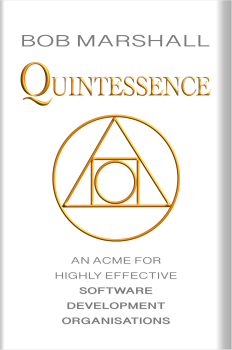Interactive Book: Quintessence – Chapter 14, Needs
Sidecar for Chapter 14 of “Quintessence” (Needs)
Selected ChatGPT Prompts
In the chapter “Needs: Connecting with what’s alive in people”, needs are described as essential aspects of being human that quintessential organisations recognise and embrace. Such organisations attend to the needs of their employees, managers, executives, customers, and others to encourage positive outcomes like engagement, morale, relationships, and joy. The following prompts are designed to help you explore the topic of needs further, understand how they affect individuals in various roles, and discover how to address them in your own organisation. Feel free to customise these prompts to suit your specific context.
- [Purpose] Understanding the concept of needs
[Prompt] Explain the concept of needs in the context of human psychology and organisational success. - [Purpose] Exploring the needs of employees
[Prompt] List and discuss common needs of employees in organisations, and suggest ways to address them. - [Purpose] Identifying needs of managers and executives
[Prompt] Compare and contrast the needs of managers and executives in organisations, and recommend strategies to meet these needs. - [Purpose] Addressing customer needs
[Prompt] Describe common needs of customers and explain how organisations can effectively respond to them. - [Purpose] Recognising the importance of individual needs
[Prompt] Discuss the importance of acknowledging and addressing individual needs in promoting personal and organisational success. - [Purpose] Utilising Needs Inventories
[Prompt] Explain the concept of a Needs Inventory and its potential benefits for organisations in addressing employee needs. - [Purpose] Connecting needs to the bottom line
[Prompt] Analyse the relationship between addressing needs and the commercial success of an organisation. - [Purpose] Exploring the role of positive psychology
[Prompt] Discuss the role of positive psychology in addressing the needs of individuals within an organisation. - [Purpose] Understanding Nonviolent Communication
[Prompt] Describe Nonviolent Communication and its potential impact on addressing needs and fostering healthy relationships in organisations. - [Purpose] Learning from the literature
[Prompt] Summarise key insights from the recommended further reading on needs, psychology, and organisational success.
A Suggested Learning Path on the Topic of “Needs”
- Introduction to Needs.
[Prompt] Explain the concept of needs in the context of quintessential organisations and why addressing them is crucial for organisational success.
[Exercise] Reflect on your own needs in your current role and create a list of top five priorities. Share your list with a colleague or supervisor and ask for their input. - Identifying Needs in Different Roles.
[Prompt] Describe typical needs for employees, managers, executives, customers, and others in an organisation. Provide examples of how these needs might differ from one another.
[Exercise] Organise a small group discussion within your organisation to explore the needs of different roles. Document the findings and suggest ways to address these needs. - Implementing Needs Inventories.
[Prompt] Explain the concept of a Needs Inventory and discuss how an organisation can use it to identify and address the needs of its members.
[Exercise] Using the Needs Inventory concept, create a customised inventory for your organisation. Ask team members to fill it out and discuss the results in a team meeting. - Addressing Needs and the Bottom Line.
[Prompt] Analyse the relationship between addressing needs and the commercial success of an organisation.
[Exercise] Identify specific areas in your organisation where addressing needs can lead to improved performance. Create an action plan and present it to your team or supervisor. - Positive Psychology and Nonviolent Communication.
[Prompt] Discuss the role of positive psychology and Nonviolent Communication in addressing the needs of individuals within an organisation.
[Exercise] Organise a workshop or training session on positive psychology and Nonviolent Communication for your team. Encourage participants to apply these concepts in their daily interactions.
This learning path offers a structured approach to exploring the topic of Needs in the context of quintessential organisations. By engaging with these prompts and exercises, readers will gain a deeper understanding of change and its role in organisational success.
Some Alternative Learning Paths
In the context of Needs, several learning paths can be beneficial to gain a comprehensive understanding of the topic and its applications in various domains. Here are five additional learning paths that might be useful:
- Emotional Intelligence: Explore the concept of emotional intelligence and its role in identifying and addressing needs, fostering healthy relationships, and improving workplace communication.
- Leadership and Needs: Examine how leaders can effectively identify and address the needs of their teams to create a supportive work environment that promotes growth and success.
- Organisational Culture and Needs: Investigate the relationship between organisational culture and needs, and understand how a needs-focused culture contributes to employee satisfaction, engagement, and performance.
- Motivation and Needs: Discover the connection between needs and motivation, and learn strategies for addressing needs to foster intrinsic motivation and drive performance in the workplace.
- Needs-based Conflict Resolution: Explore the role of needs in conflict situations and learn techniques for resolving conflicts by addressing underlying needs and fostering empathy and understanding.
These learning paths offer a well-rounded perspective on the topic of Needs, addressing various aspects that influence individual and organisational success. By engaging with these additional learning paths, readers can further deepen their understanding and apply the knowledge to create positive change in their organisations.Ask ChatGPT to elaborate on one or more of these paths, or suggest others.

